YOU CANNOT KILL DAVID ARQUETTE (2020)
Actor David Arquette attempts a rocky return to the sport that stalled his promising Hollywood career.
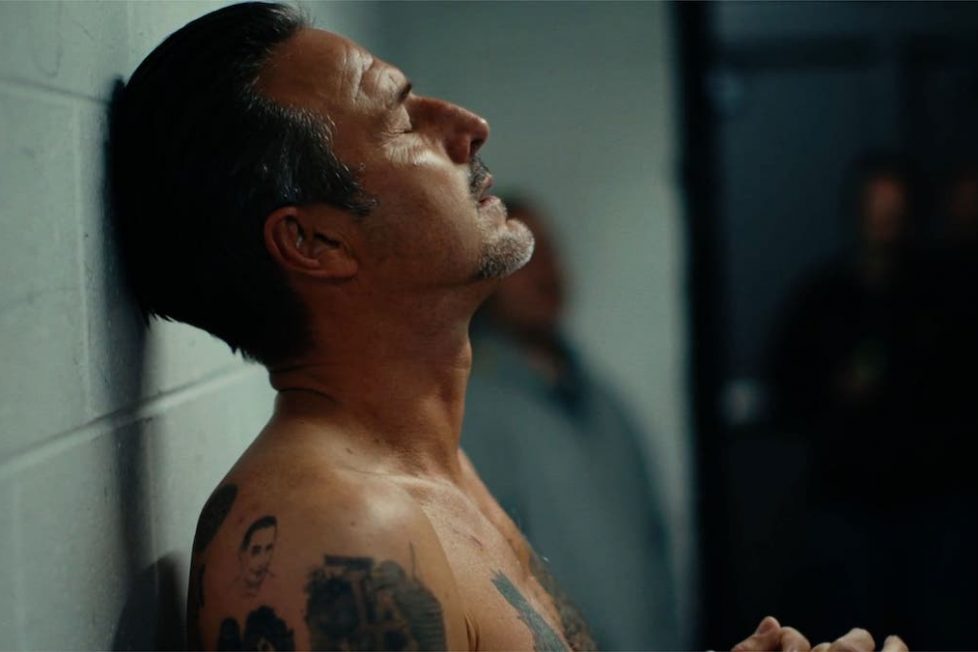
Actor David Arquette attempts a rocky return to the sport that stalled his promising Hollywood career.


“I just don’t want to be seen as a joke anymore”, says David Arquette midway through the documentary feature You Cannot Kill David Arquette. While there’s pathos in the statement, it’s undercut by the fact that, as he says this, he’s sitting on a horse and wearing a wizard’s cloak while taking a long, deep toke from a vape pen. It’s one of the most bizarre moments of cinema this year, and something of a microcosm of this film and its subject.
In 2000, after gracing the cover of Vanity Fair alongside the likes of Will Smith and Leonardo DiCaprio, having enjoyed success within the Scream franchise, David Arquette took a brief detour into the world of professional wrestling to promote his film Ready to Rumble (2000). It would be, by all accounts, a disaster. The writers of the weekly wrestling show he featured on, WCW Thunder, decided to throw Arquette’s championship gold in a gimmicky choice that, as the film underlines, made fans deeply unhappy.
Shunned by the wrestling world as a joke who hadn’t earned his way into this industry, and equally shut-out by Hollywood (which now saw him as an unpredictable oddball), Arquette found himself stuck between two worlds. Nearly 20 years later, You Cannot Kill David Arquette looks at the fragments left behind, and Arquette’s terrifyingly committed mission to put them back together and step into the ring once more.
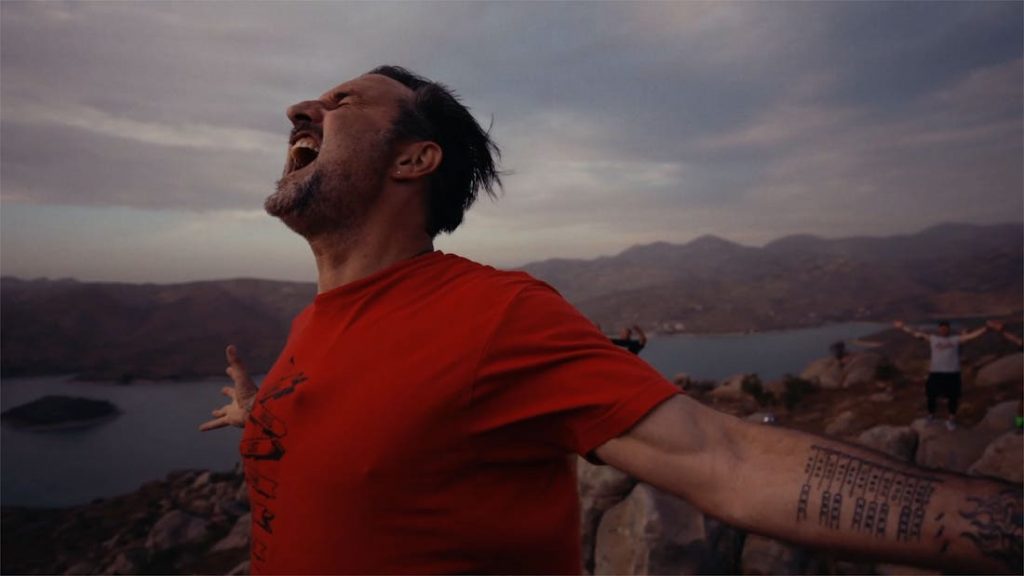
If this synopsis has you wondering why on earth you’d watch a documentary about wrestling, or a struggling actor—let alone a struggling wrestling actor—rest assured. This is as much a documentary about fame and its pitfalls as it is about anything else. That’s not to say You Cannot Kill David Arquette isn’t a fascinating and almost profound look at wrestling and its practitioners, because it absolutely is. Arquette waxes poetic throughout about the quasi-sport, and he makes a compelling case for it. “It’s theatre on steroids.”
Against his family’s wishes, Arquette (who admits he’s out of shape and has a shopping list of physical maladies, including a recent heart attack) pushes onwards, in a desperate bid to earn his stripes in the ring. There’s no doubting his commitment to the theatrics of it all, and no question about his love for it as an art form. He remembers watching Miss Elizabeth and Randy Savage on television as a boy, and how his father (the actor Lewis Arquette) used to voice wrestling legend Jimmy Snuka on a kid’s cartoon series. To Arquette, it isn’t just entertainment: it’s romance, adventure, escape, a way for him to process life’s disappointments in a clearly delineated hour of television. There are good guys and bad guys. There are wins, losses, and rules. There are friendships.
Directors David Darg and Price James present Arquette as intimately and nakedly (often literally) as any subject i’ve seen in a documentary, and it’s the ugly reality which makes Arquette’s daydreams so poignant. He gets into fights with retired wrestlers after begging them to book him on their tour, he drunkenly breakdances on tables, and he vomits in hotel bathrooms—sometimes from pushing his training too hard, other times from pushing his liver too hard. It’s a portrait of a man who has himself in a mental headlock, unable to break free from the desire to live out his dreams, yet held in place by his self-destructive behaviour. But as he sits on his couch, slurring that he’s a “fuck-up, even when I’m sober”, it’s impossible not to have sympathy for him.
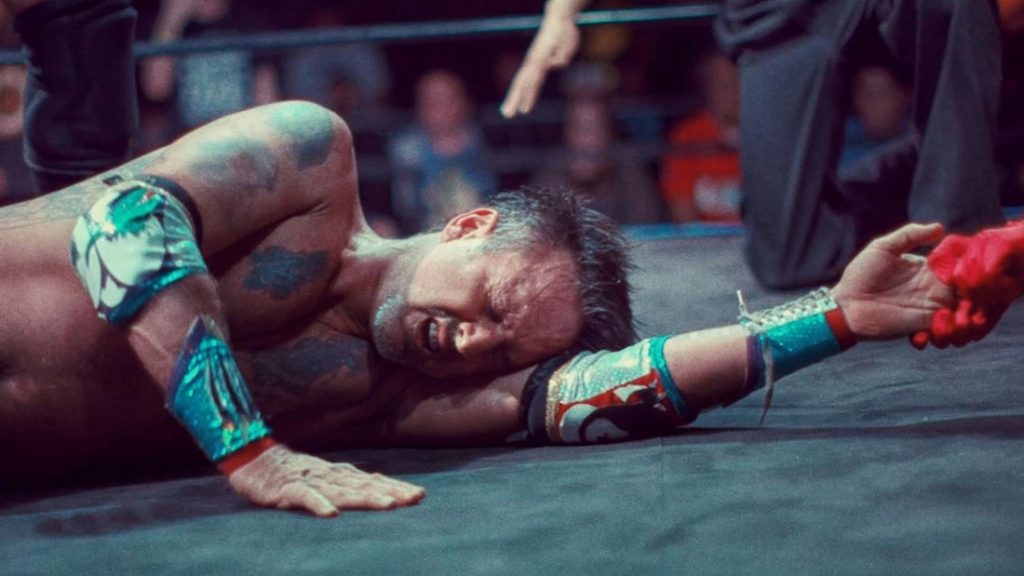
Darg and Price don’t have to work hard to make him likeable—he has a natural affability which made him a star in the first place. He’s eccentric but genuine, and always appears to have his heart in the right place. His sisters, Patricia and Rosanna Arquette, and his ex-wife Courtney Cox, show up in the film, and it’s obvious what a true love they have for him. He just seems like everyone’s younger brother, who never quite grew up.
The love they have for Arquette is also present in the way Darg and Price present independent wrestlers, old retired men with shattered hips, and travelling wrestling superfans. There isn’t a whiff of mocking or condescension. The film wouldn’t work if there was; Arquette is such a wide-eyed dreamer that it’s hard not to believe in his vision, and Darg and Price don’t doubt him for a moment.
Ludicrous photoshoots involving fireballs and cloaks, and sojourns to Mexico to indulge in street wrestling (literally, as Arquette and a group of Lucha Libre wrestlers fight in front of cars stopped at traffic lights like a bizarro version of windscreen cleaners, before going up to car windows for cash offerings) are just some of the highlights. While a potential low is hit when his first ‘booking’ is in a makeshift wrestling ring in someone’s back garden, which collapses halfway through the match. It’s an inherently funny scene (“I dunno, I was in jail when it was put up” responds one of the fans when asked why the ring fell apart), not far from something you might see in a Christopher Guest film.
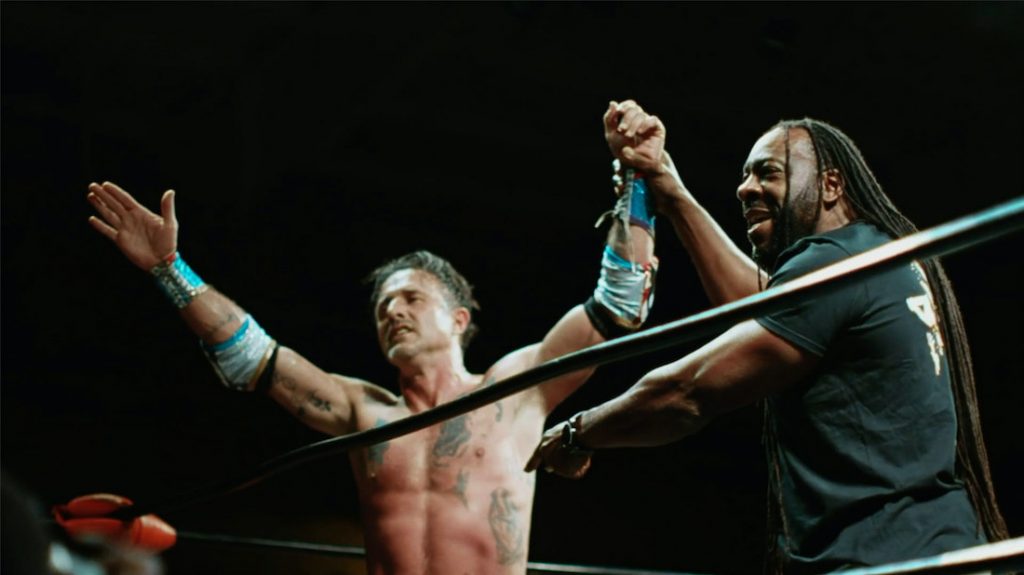
But while Arquette slumming it like this could feel bleak, there’s a warmth and humanity to it. Once out of the ring, all the trash talk fades, hugs are had, and the guys give Arquette wrestling tips. Between the cheap smoke machines, broken beer bottles, and Slayer T-shirts, are a group of working class dudes taking great pleasure in putting on a show that makes no money and gets no coverage, but is done for love of the game. It’s rough around the edges, but it’s fundamentally what the whole business was built on. It’s solidarity between a group of people who decide to put their bodies in jeopardy to put on a show. Arquette, who’s looking for little more than acceptance, might easily have stopped his journey there.
But as the title suggests, You Cannot Kill David Arquette and you cannot stop him either. As his matches gain more attention, they grow in brutality. His body becomes increasingly damaged throughout, and his wife, Christina, grows increasingly concerned. No matter the bumps he takes between the ropes, it’s outside of the ring where the film is most brutal. A visit to a neurologist suggests that parts of his brain ‘do not connect properly’, while a psychiatrist claims that Arquette’s in such a constant state of anxiety that he’s not physically able to calm himself down.
In once scene, he plays with a marionette puppet of himself. “It’s alright buddy”, he tells it, before having it ask him “why do people hate me so much?” He has his miniature self fight a devilish looking puppet, before pinning it for the three count. He’s off in a fantasy world again, playing with toys, commentating a fake match. With shades of Being John Malkovich (1999), it feels surreal and deeply sad, but also somewhat performed. But then, is Arquette always performing? Whether as an actor or a wrestler there is little difference—both are jobs that allow a person to transcend their own personality, and become someone else, or perhaps a stronger and more pronounced version of who they are. And in a desire for a love and affection that can never possibly be enough, both careers are notorious for screwing people up.
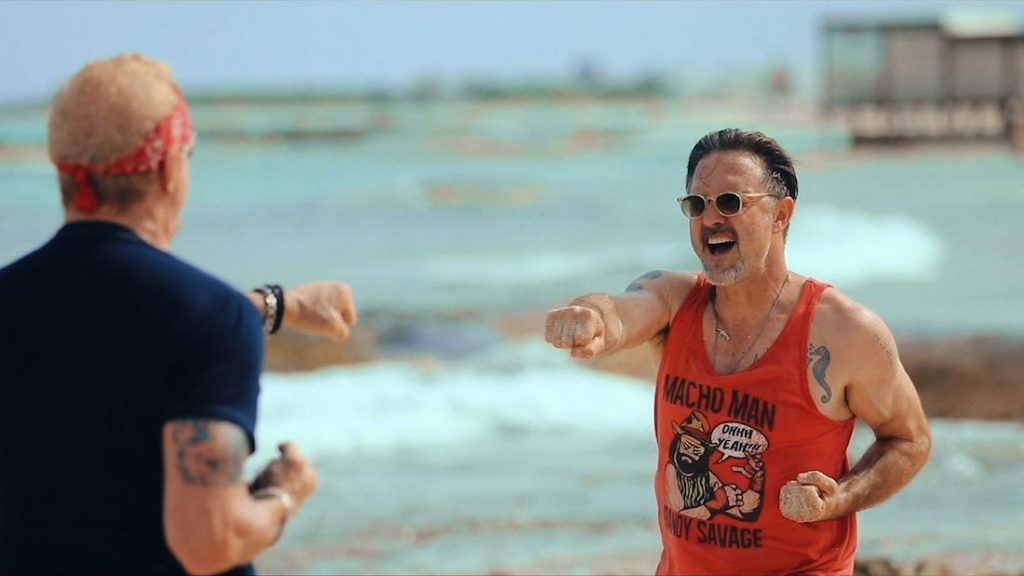
Later on, in a death-match, Arquette gets his neck stabbed by a broken lightbulb. He looks shocked. His opponent breaks character and looks horrendously worried as Arquette clutches his wound. He quickly leaves the ring, heading for the exit. But before he does, he turns back, his angle perfect—he knows where his cameras are. In what he’d probably describe as his hero moment, he runs back into the ring to finish the match. It seems as if it were an act. But it wasn’t. Arquette is rushed to hospital after the fight, where bloods squirts from his neck. The injury was real…. he just didn’t want to leave the match unfinished.
What makes wrestlers do this? What compels them to spend 300 days a year on the road away from their family, and spend weeks in hospitals and physical therapy clinics? Similarly, what makes an actor go on 100 auditions, win none, and keep going out there for more? What makes them pretend to be somebody else to the extent they have no idea who they are anymore? Arquette’s a glutton for pain, both mental and physical. Though the documentary can’t point to any concrete answers, it suggests that fame, personal failings, and deep insecurities are behind it all. What makes it such a successful documentary is the same alchemy that made American Movie (1999) and Anvil! The Story of Anvil (2008) work: that at its core is a deeply complex and fundamentally decent person who totally refuses to give up on a dream.
Arquette’s small victories are earned. You’ll be begging him to stop and praying for him to succeed in equal measure. At the end of it all, you might still have hope for him. “Get stomped like a snake, lie down in the dirt, cling to my convictions, even when I get hurt”, Mountain Goats frontman John Darnielle sang on their song “Heel Turn 2”, from an album that was about pro wrestlers. The lyrics could easily apply to Arquette, a true original who, for better or worse—in the spirit of wrestling—refuses to give up or throw a fight. Like all showmen, it’s not about winning the fight… it’s about giving the audience a damn good time.
USA | 2020 | 91 MINUTES | COLOUR | ENGLISH

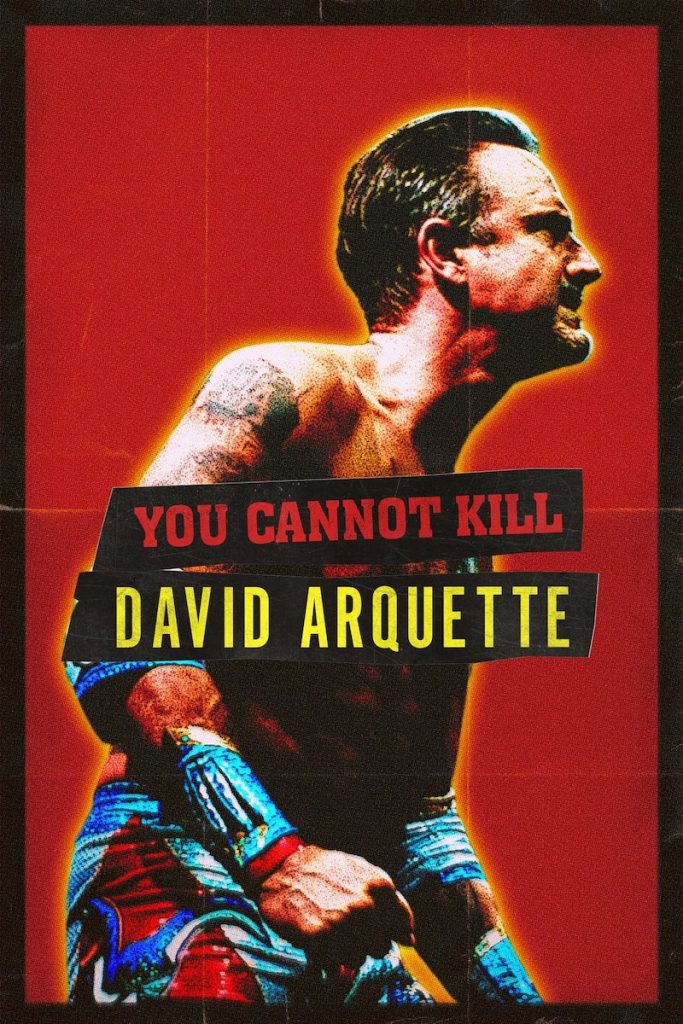
directors: David Darg & Price James.
producers: Ross Levine, Christina McLarty Arquette, Bryn Mooser & Stacey Souther.
starring: David Arquette, Patricia Arquette, Rosanna Arquette, Richmond Arquette, Courteney Cox, Ric Flair & Mick Foley.
